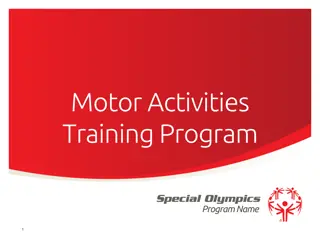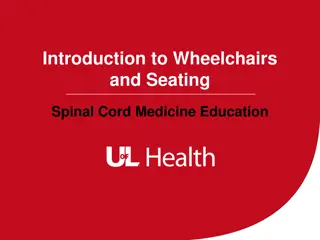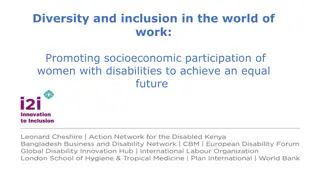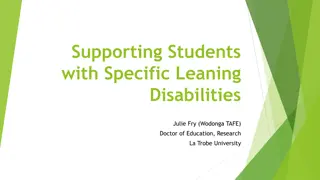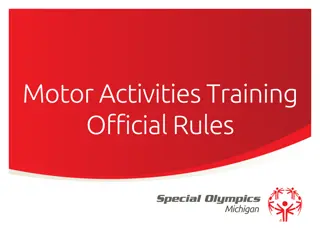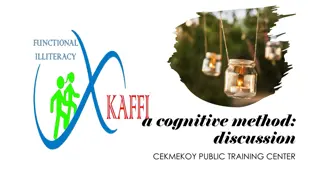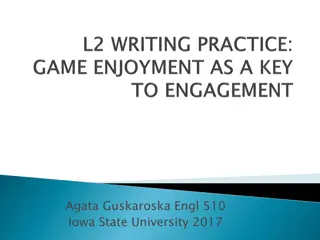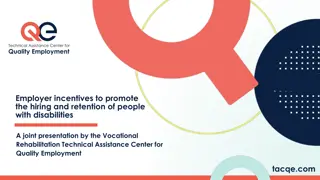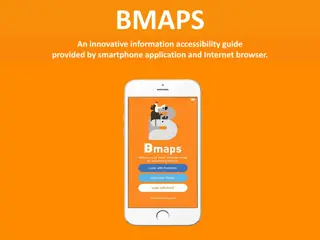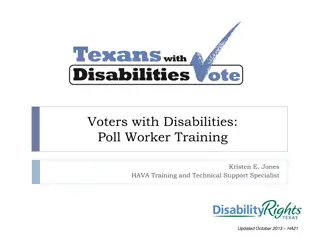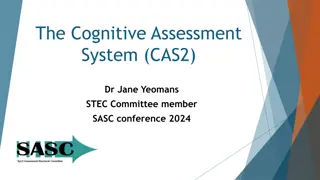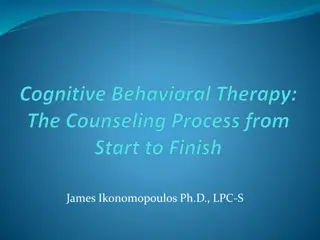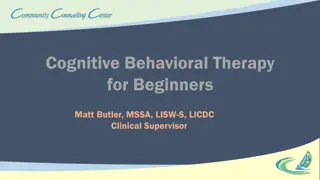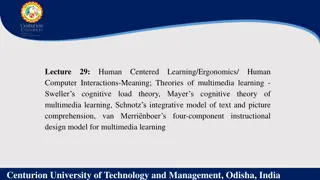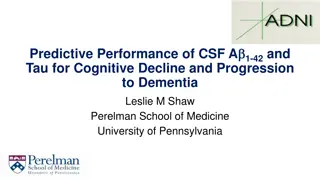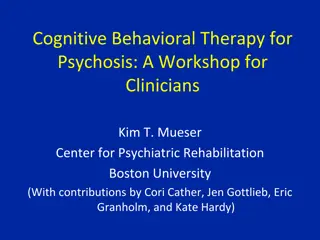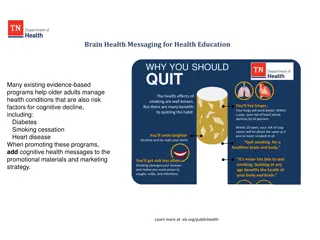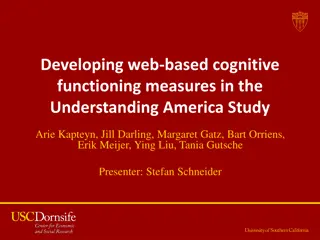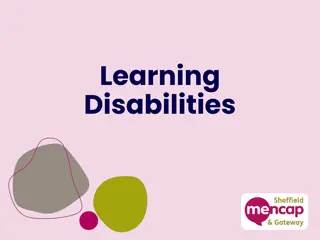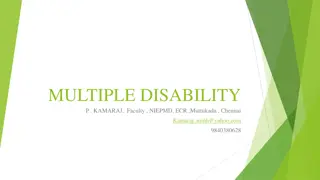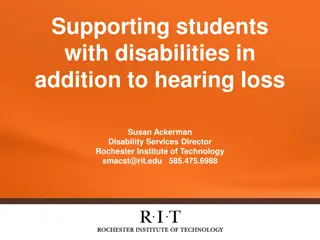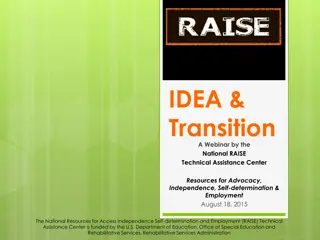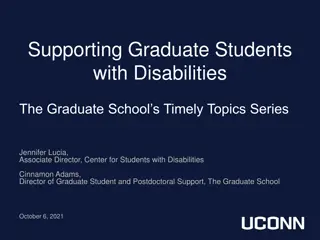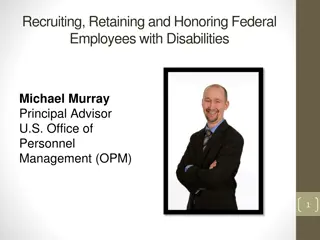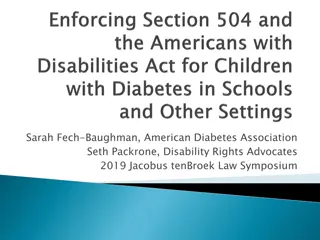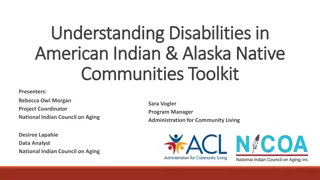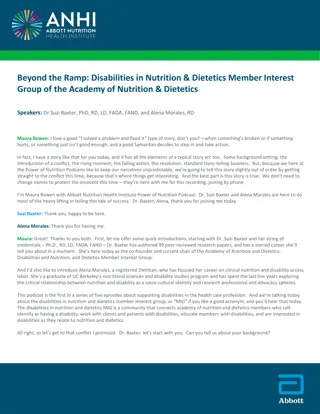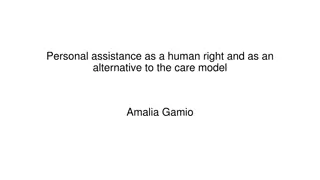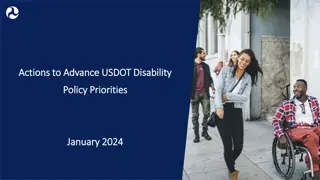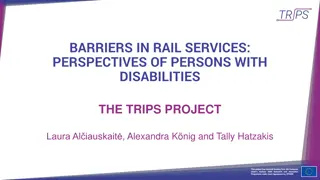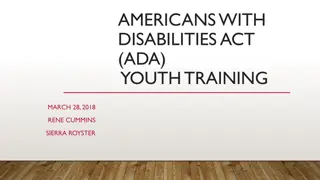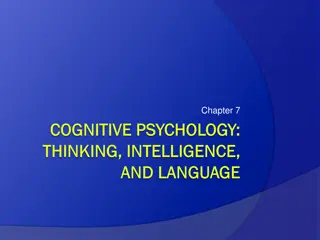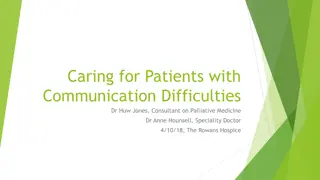Innovative Wheelchair Training Methods for Cognitive Disabilities
Lisbeth Nilsson, PhD, an occupational therapist, developed the "Driving to Learn" method for individuals with severe cognitive disabilities. This method focuses on enhancing cognitive skills, motor abilities, and independence through powered wheelchair training. The TIRO learning tool, designed based on this method, offers predictable functions and stable seating for safe practice. With a strong focus on enhancing neural plasticity, problem-solving, and body awareness, these innovative tools aim to empower individuals to become adept tool users in clinical and educational settings.
Uploaded on Sep 13, 2024 | 0 Views
Download Presentation

Please find below an Image/Link to download the presentation.
The content on the website is provided AS IS for your information and personal use only. It may not be sold, licensed, or shared on other websites without obtaining consent from the author. Download presentation by click this link. If you encounter any issues during the download, it is possible that the publisher has removed the file from their server.
E N D
Presentation Transcript
Lisbeth Nilsson PhD, occupational therapist and specialist Associated to Lund University and Norrbotten Health County Council
Learn to understand the own body and the lived experience Learn to influence, direct and control A gate to becoming a tool user
Driving to Learn The method was developed for children, youth and adults with severe cognitive disabilities Nilsson, L. (1996). What can be achieved by training in powered wheelchair. A study of two multihandicapped preschool children. Masters thesis, Lund university The Driving to Learn project was carried out 1993 2007 Project Paediatric rehabilitation, Norrbotten 1993-2007 Project Lule , Special school 1997 1999 Project Jokkmokk, Primary Health day-care service 1999 2001 R&D-project, Jokkmokk, Day centre, special school 2003 2006 Doctoral dissertation Lund 2007 Nilsson, L. (2007). Driving to Learn. The process of growing consciousness of tool use a grounded theory of de-plateauing. Dissertation, Lund University, Lund, Sweden.
Driving to Learn what develops? Own initiatives to activity Neural plasticity Responsibility Problem-solving Executive functions Multi-tasking Explorative behaviour Attention regulation Alertness Wakefulness Memory Interaction communication Motivation emotions Becoming a tool user Motor skill perception Executive functions Body-awareness sense of self Independent mobility
A tool for learning A powered wheelchair for practice Can be used in many different practices Only for use in clinics, schools, day care and alike
TIRO the learning tool The design is based on the findings in the Driving to Learn project Three prototypes were clinically tested Predictable functions Good properties for learning Stable active sitting A one-for-al seating unit Developed in co-operation with Permobil AB, Sweden and Permobil Europe Nilsson, L., & Eklund, M. (2006). Driving to Learn. Powered wheelchair training for those with cognitive disabilities. International Journal of Therapy and Rehabilitation, 13(11), 517-527.
TIRO a wheelchair for practice TIRO makes practice safer for people who have physical limitations or cognitive disabilities Seating unit that quickly can be adjusted in-between child and adult size without using any hand tools Joystick mounted in the center of a Plexiglass tray that is attached to the armrests - possibility to choose best hand for operation or use both hands Electronics with a special programming that makes driving safer and facilitates learning
One-for-all seating unit Makes it possible to use ONE powered wheelchair for many who needs practice both children and adults Opens opportunities for those who needs very long periods of practice to learn If rehabilitation practices are located in the same building complex they can have one TIRO together and share the costs Assistive technology providers can have a TIRO for assessment and rental Multi-sensory Centres can have a TIRO to provide movement experiences in action
TIRO quick shift adult child size Seating depth Electronic box on the back rest Plexi-glass tray with mid-placed joystick Quick adjustment of tray height Mechanical bumper Sliding rail for back rest + tray
ALP = Assessment of Learning Powered mobility use A tool for assessment and facilitation of tool-use learning
The ALP-tool involves 2 parts The ALP-instrument The learning process has eight phases: from 1 novice to 8 expert The phases are grouped in three stages: exploration of functions, sequencing and performance AND Strategies facilitating learning
The ALP instrument (Nilsson & Durkin, JRRD, 2014) Phase Attention Activity & Movement Understanding of tool use Expressions & Emotions Interaction & Communication STAGE 8 Integrated tool use Attention well established and sustained Occupation composed of two or more activities Dependent on the doing of other activities Multi-level integrated interactions Body, machine, environment, & PERFORMANCE PERFORMANCE 7 occupation Explore Multi- channelled attention Generally focused Occupation for its own sake Fluent precise use of tool Happiness Concurrent interactions Satisfaction 6 Competent use of tool Multi-channelled attention but easily disrupted Serious Contented Laugh Excited Consecutive interactions Activity Goal-directed 5 SEQUENCING SEQUENCING Two-channelled attention Sequences of chains of acts Idea of competent tool use is born Eager, smile Serious Frustration Reciprocated interaction Triadic interaction Body, machine, & environment Explore 4 Single channelled attention but able to shift spontaneously Chains of acts Exploration of extended tool use Serious Smile Sometimes laugh Mutual interaction 3 Act directed Single channelled attention but able to shift attention Serious Contented Smile Initiates interaction Basic use of tool FUNCTIONS FUNCTIONS Body, & machine 2 Explore Single channelled attention Pre-act Idea of basic tool use is born Contented Curious Anxious Angry Responds to interaction 1 Extreme distractibility Passive or anxious Excited Non-act Rejection No or vague idea of tool use Open Neutral Anxiety No response Avoidance
Strategies facilitating learning Dialogue pedagogy Mutual interaction Co-construction of the practice session Facilitation of problem solving ability Shifts between difficult tension and easy - relaxation Shifts between seriousness and fun, playfulness Hand over responsibility for the situation to the learner
Evidence of today Ongoing research Where the method is implemented
Evidence for Driving to Learn Research has been carried out since 1993 Qualitative method Studies carried out in clinical practices Participants aged from 3 months to 86 years Dissertation 2007: results from 109 children and adults with cognitive disabilities 17 infants with typical development Various aetiologies causing the cognitive limitations Walking participants
Publications in journals Nilsson, L., & Durkin, J. (2014). Assessment of learning powered mobility use applying Grounded Theory to occupational performance. Journal of rehabilitation research and development,51(6),963 74 Nilsson, L. (2012). Driving to Learn. A new intervention for people with stroke and spatial neglect. Posture and Mobility Group Journal 29(2),15-19. Nilsson, L., Eklund, M., & Nyberg, P. (2011). Driving to Learn in powered wheelchair. The inter-rater reliability of a tool for assessment of joystick-use. Australian Occupational Therapy Journal, (58), 447- 454. Nilsson, L., Eklund, M., Nyberg, P., & Thulesius, H. (2011). Driving to Learn in a Powered Wheelchair: Identification of the Process of Growing Consciousness of Joystick-use in People with Profound Cognitive Disabilities. The American Journal of Occupational Therapy, (65)6, 652-660. Nilsson, L. (2011). Communication mediated by a powered wheelchair: People with profound cognitive disabilities. Disability Studies Quarterly, 31(04) Nilsson, L., Nyberg, P., & Eklund, M. (2010). Training characteristics important for growing consciousness of joystick-use in people with profound cognitive disabilities. International Journal of Therapy and Rehabilitation, 17(11), 588-595. Nilsson, L., & Eklund, M. (2006). Driving to Learn. Powered wheelchair training for those with cognitive disabilities. International Journal of Therapy and Rehabilitation, 13(11), 517-527. Nilsson, L., & Nyberg, P. (2003). Driving to Learn. A new concept for training children with profound cognitive disabilities in powered wheelchair. American Journal of Occupational Therapy, 57, 229-233. Nilsson, L., & Nyberg, P. (1999). Single-switch control versus powered wheelchair for training cause- effect relationships: case studies. Technology and Disability, 11, 35-38.
Driving to Learn - further research SWEDEN R&D-project Region Sk ne BoU-rehabilition 2007 2011 Svensson, E., & Nilsson, L. (2009). K ra f r L ra. Kort Fou-rapport nr 3-2009. FoU Habilitering & Hj lpmedel, Region Sk ne. (in Swedish) R&D-project Norrbotten, Stroke-rehabilitation and BoU- habilitering 2010 Nilsson, L. (2012). K ra f r att L ra stimulerar utveckling och l rande hos personer med kognitiva funktionsneds ttningar. Tidskriften Arbetsterapeuten, nr 8, Forskning i praxis. (in Swedish) R&D-project, Norrbotten, Nursing home 2011 R&D-project, KI, Stockholm, small children 2013 SWITZERLAND Research project, St Gallen, children with CP aged 2-4 years 2015
Exploring functions and sequencing phases 3-4-5
Contact and information Contact: Lisbeth Nilsson Mail address: Box 158, 960 33 Murjek, SWEDEN E-mail: lisbeth.nilsson@med.lu.se Information: Homepage: www.lisbethnilsson.se/en/ ResearchGate: http://www.researchgate.net/profile/Lisbeth_Nilsson LinkedIn: http://se.linkedin.com/pub/lisbeth-nilsson/25/745/1a2


